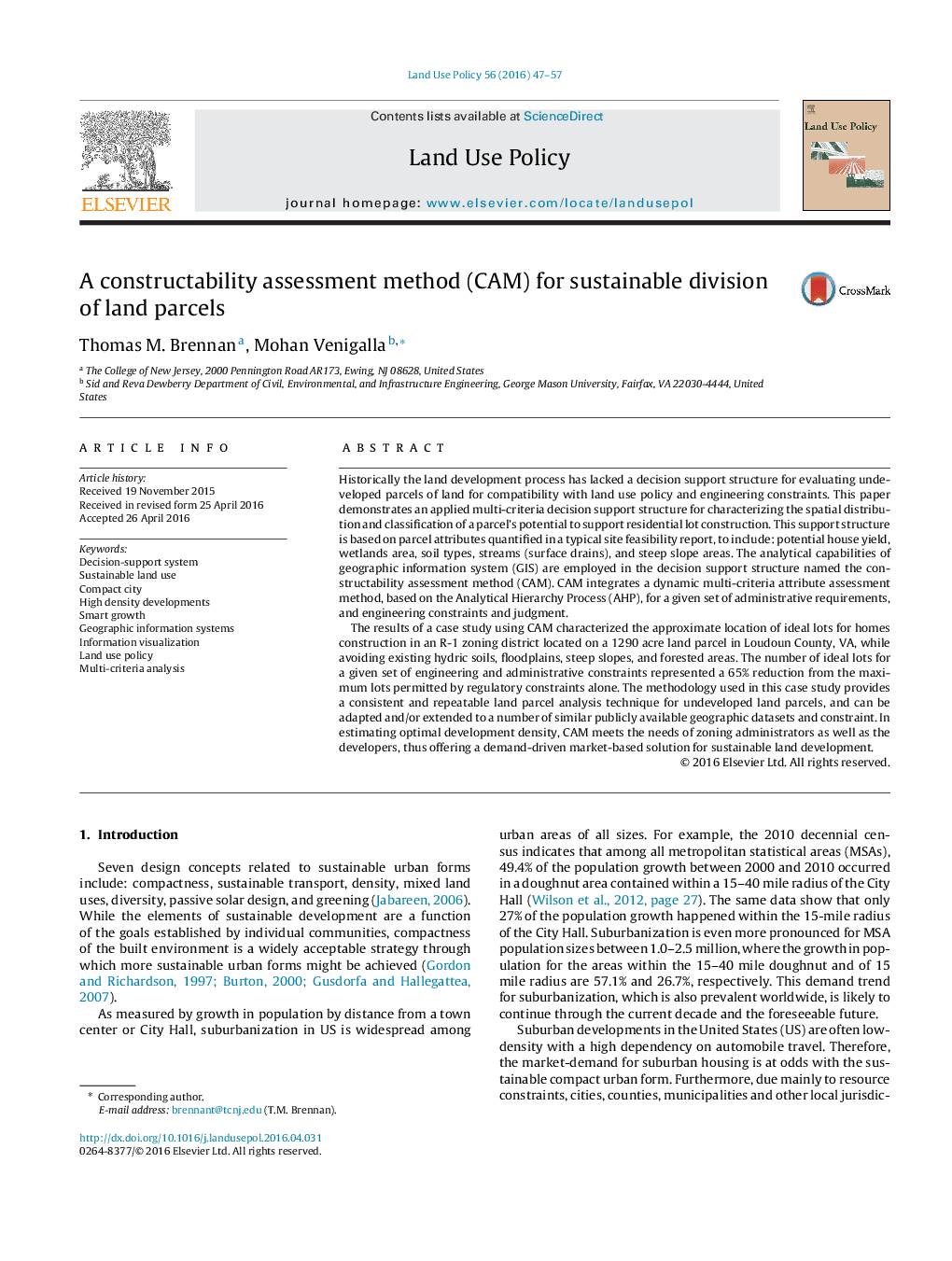| Article ID | Journal | Published Year | Pages | File Type |
|---|---|---|---|---|
| 6547157 | Land Use Policy | 2016 | 11 Pages |
Abstract
The results of a case study using CAM characterized the approximate location of ideal lots for homes construction in an R-1 zoning district located on a 1290 acre land parcel in Loudoun County, VA, while avoiding existing hydric soils, floodplains, steep slopes, and forested areas. The number of ideal lots for a given set of engineering and administrative constraints represented a 65% reduction from the maximum lots permitted by regulatory constraints alone. The methodology used in this case study provides a consistent and repeatable land parcel analysis technique for undeveloped land parcels, and can be adapted and/or extended to a number of similar publicly available geographic datasets and constraint. In estimating optimal development density, CAM meets the needs of zoning administrators as well as the developers, thus offering a demand-driven market-based solution for sustainable land development.
Keywords
Related Topics
Life Sciences
Agricultural and Biological Sciences
Forestry
Authors
Thomas M. Brennan, Mohan Venigalla,
